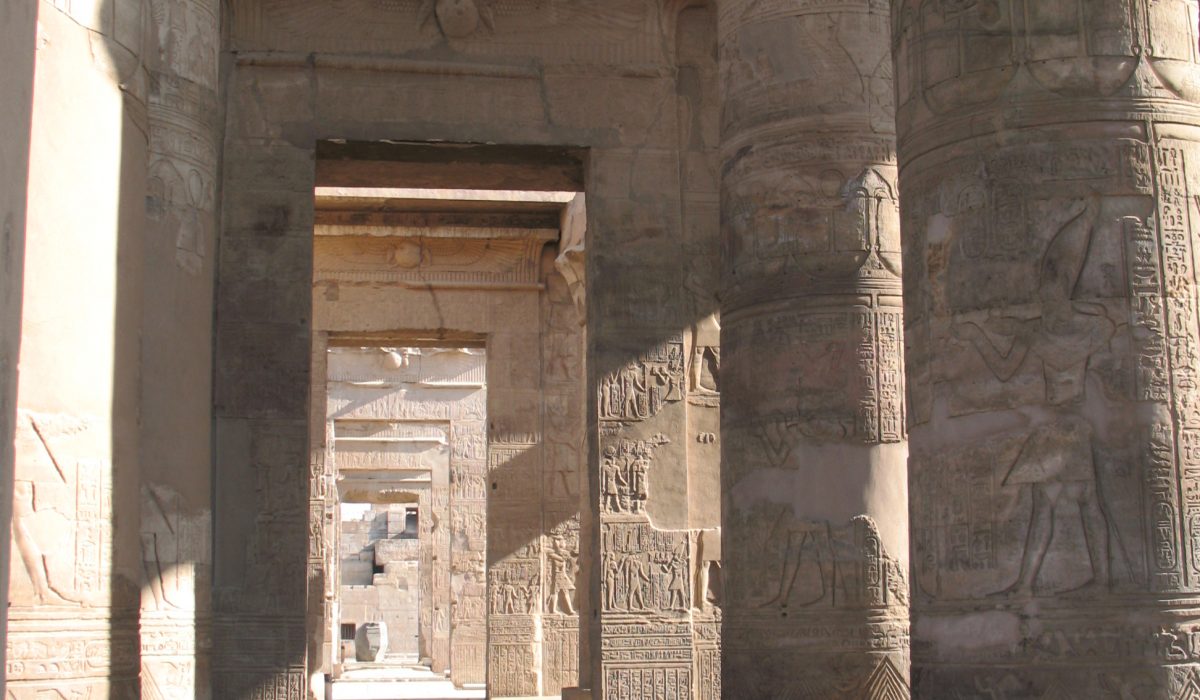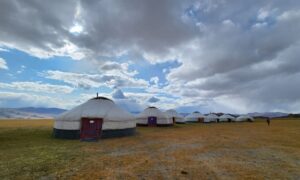
by Kate Kate Dernocoeur, Guest Blogger
Egypt, December 2015
The gods listen to your heart, not your tongue.
Of the many places I have visited, Egypt is among the most complex and sometimes overwhelming. It is unrivaled both in the astounding scope of its history and the sheer volume of its archaeological treasures. During my journey there in December, 2015, our guide was magnificent at teaching us about a culture and history that extends back to 10,000 B.C. and beyond. Indeed, he told us, fully 20 percent of the monuments in the world are there in Egypt…and we saw many of them during our ten days with him.


People who study Egypt are called “Egyptologists,” and there is plenty to provide lifelong learning opportunities for anyone interested in that part of humankind’s history. There are the 30 ancient dynasties of pharoahs, for starters. Then there are the abundant gods and goddesses and their celestial stories. Each of them plays a role: Horus, son of Osiris and Isis (yes, “Isis”—the Goddess of Love, which makes it so sad that the term has taken such a sinister modern-day twist). Anubis, god of mummification and keeper of the cemeteries. Nut, goddess of the sky, who protects the dead with her wings. Maat. Sobek. Aton. Ra. You can co-mingle all that information by studying how some of the Pharaohs tried to appear (or even become) gods. There are so many temples and monuments and funeraries, and yet more are discovered all the time.


Much of the history of Egypt revolves around life, death, and the afterlife. We visited the Temples of Karnak, Hathor, Luxor, Philae, and Esna, saw the Colossi of Memnon, went to the Valley of the Kings, flew into the desert to visit the rock temple of Ramses II at Abu Simbel. It, notably, was saved from the rising waters of the 215-mile long Lake Nasser after the High Dam at Aswan was finished in 1972–a lake now host to some 43,000 Nile crocodiles. We also went to the sites of ancient Memphis (once the capital of Egypt), and to the great pyramids, of course, and the Sphinx (the one the Brits used for artillery practice in times when the value of the antiquities was differently appreciated). I found it interesting to learn that the three pyramids at Giza are aligned with the stars of Orion’s belt.


I always wonder what it was like to wander in these places when they were really being used. As a common woman, I would probably have been barred from entry. Nowadays, tourists in shorts and sunshade hats snap their souvenir photos in immense temples where once only the Pharaoh and a very few holy men could wander. (That restriction, of course, was applied only after the stone-carving, block-hauling, obelisk-raising slaves and artisans and others worked for decades to finish building them.)
In every temple and site, (nearly) every surface was carved. There were hieroglyphics stemming from 3,000 B.C. Our guide explained how to “read” them, but it wasn’t easy. There were also scenes from the stories of the gods and goddesses, displaying a richness of splendor hard to imagine. And those were just the stone walls! At the Cairo Museum, we could see objects rendered in gold and other precious metals, and the Russian-doll entombment systems where a ruler would be encased in multiple sarcophagi and then layer after layer of coffins and, eventually, shed-sized containers.




But like everywhere, Egypt is changing—fast. A new baby joins its 90 million citizens every 23 seconds. Of an area of 650,000 square miles, the Egyptian population lives on but 7.5 percent of the land; the rest is desert. With 90 percent Sunni Muslims and 10 percent Coptic Christian, the Jews hardly register, especially since most of the millions of Jewish people who once called Egypt home departed when things changed for them in 1955.

How will the monuments ever be able to survive human intervention, when the critically-ill tourist industry remains hostage to geopolitics and regional troubles? If so few people dare venture to Egypt, will governmental support for antiquities begin, increasingly, to fail? I hope the Egyptologists and others who understand the importance of the legacies of Egypt can continue to secure these precious sites and objects for all of mankind. Their history as a cradle of civilization belongs to all humankind.

Kate Dernocoeur set off with the UniWorld travel company on the iconic Nile River trip aboard the Rover Tosca in December, 2015. Here, she takes a break to lean on an antiquity. Kate’s blog is called Generally Write. Click here to see her latest post.






Comments
4 CommentsPeggy
Jun 20, 2016As a young college student in a humanities program in a small women’s college in Detroit, I was first exposed to the wonders of the ancient Egyptian Civilization; even did a research paper on Osiris and Isis. Spent days in the library stacks trying to determine where to even begin. Got lost in a volume almost as big as one of the great pyramids; barely made it out.
Your post brought it all back to me; the immensity of the cultural wonders and the profundity of the ancient imaginings. Thank you.
Margaret Idema
Jun 20, 2016Good job on this piece, Kate…and you are so right about travelers needing to NOT be intimidated by travels in Egypt! Loved the photos…I almost feel like I was there!
Susan J. Smith
Jun 20, 2016I agree with you Margaret. I think Kate did an amazing job. Make me want to travel to Egypt.
Guest Blogger shares thoughts about taking a Road Trip | DesignDestinations
Feb 4, 2019[…] the year of focusing on writing a book, recently, I had a hiatus from wandering (ok, except for Egypt in December…). It helped me realize just how much I love being at home. I really do. It’s seductive to have your […]